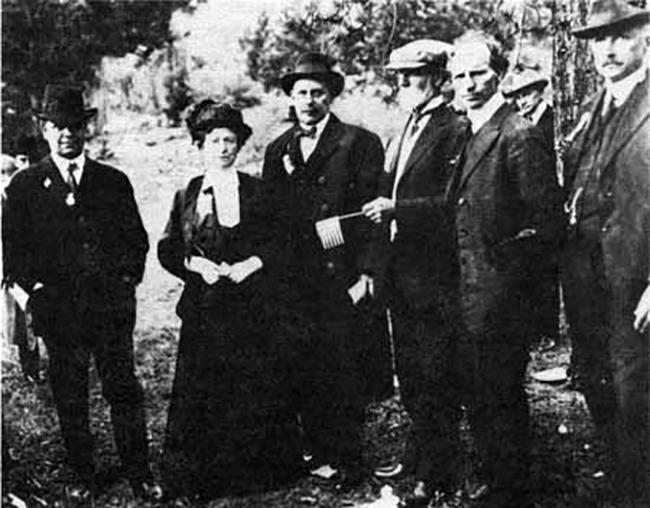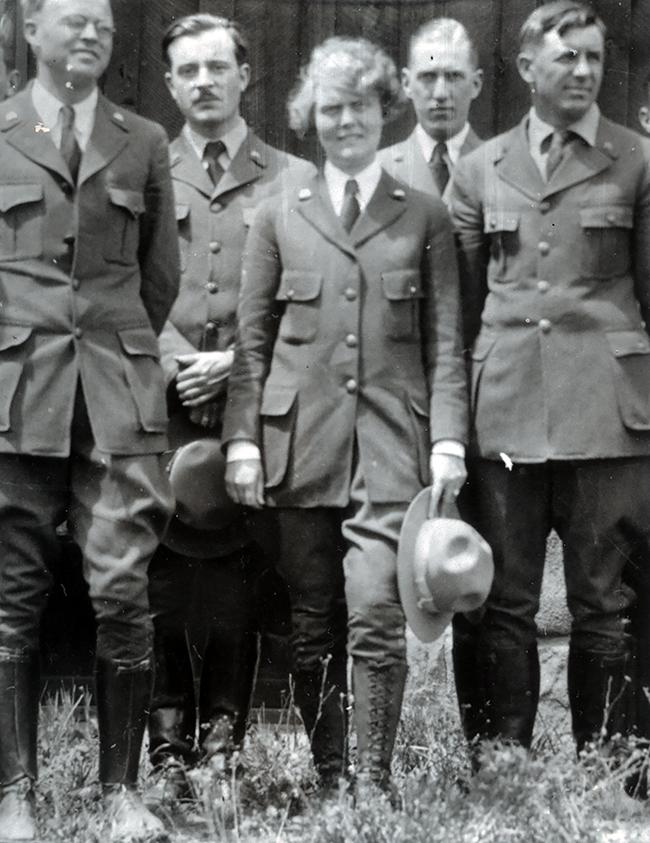Rocky Mountain National Park in Colorado is replete with history: people, places, events, stories. Women have played a huge part in this park’s history, from Isabella Bird, who wrote about her sojourn in the Rocky Mountains; to Mary Belle King Sherman, who used her influence to gain support for the establishment of this national park; to Elizabeth and Esther Burnell, who became licensed by the park as nature guides; to Margaret Fuller Boos, Rocky Mountain National Park's first female ranger-naturalist; to sisters Kitty and Annie Harbison, who started homesteading adjoining plots of land in what is now Rocky Mountain National Park.
Isabella Bird, a well-traveled Englishwoman and the first woman to be accepted into Great Britain’s Royal Geographic Society, wrote of her adventures in what is now Rocky Mountain National Park. In 1879, she published A Lady's Life in the Rocky Mountains chronicling these experiences through a series of letters about the park which she wrote to her sister living in Scotland. Bird became the became the second woman to climb Longs Peak with her friend and guide, outlaw and mountain man Jim Nugent, aka “Rocky Mountain Jim.”

Kitty and Annie Harbison, hardy homesteaders, Rocky Mountain National Park / NPS file
Kitty and Annie Harbison were sisters who so loved this rugged Rocky Mountain scenery that they began homesteading in what is now Harbison Meadow within the park.
According to Park Staff:
The beautiful view ... may have been one of the most important factors in convincing Kitty and Annie Harbison to homestead there. In 1896, the sisters started homesteading adjoining plots of land in what is now Rocky Mountain National Park. Neither married and instead ran a dairy ranch, built cabins to live in, and took care of their mother and father. In the late 1930s the park acquired the land from Mame, their fostered daughter, who they left the ranch to after their deaths. The meadow is now home to elk, migratory birds, coyotes and mule deer, while the picnic area can attract hungry chipmunks, squirrels, and birds.
Rocky Mountain National Park Volunteer D. Ferell Atkins recounted, "The Harbison family moved to Denver from Kansas about 1890, and after visiting a relative in Grand Lake, Colorado, in May of 1895 the sisters filed for homesteads on adjacent tracts of land about a mile northwest of Grand Lake. To satisfy the residence requirements of the Homestead Act, each built a cabin on her homestead – the two cabins, not more than 100 feet apart – and built the Big Cabin, in which the family lived, between them."
A contemporary writer says the sisters “worked like men. They cut and stacked the hay, roped the horses, fed and milked their sizable dairy herd – and then rolled young brother Rob out of bed to deliver milk and butter around Grand Lake in his horse-drawn cart."

Mary Belle King Sherman with other notables at the 1915 dedication ceremony of Rocky Mountain National Park / NPS file
Mary Belle King Sherman, later known as the “National Park Lady,” was a parliamentary law instructor at the John Marshall School of Law in Chicago and a philanthropist. In 1909, she and her husband John Dickenson Sherman moved to Estes Park, Colorado. A firm believer in the health benefits to children spending time in the great outdoors, Sherman used her influence to advocate for the establishment of Rocky Mountain National Park, lecturing at women’s clubs not only within Colorado but also in other states.
"Every community should have a place in which the people may spend their leisure time, where they will be brought in direct contact with things of beauty and interest in the outdoor world."
Two other sisters, Elizabeth and Esther Burnell, made their mark at the national park after traveling to Estes Park in the summer of 1916 to stay at the Longs Peak Inn.
According to Park Staff:
Esther ultimately purchased a homestead near MacGregor Pass where she stayed with enthusiasm, even through the harsh Rocky Mountain winters. She became famous for a 30-mile snowshoe across the Continental Divide.
In 1917, the two sisters were encouraged by Enos Mills to take the examination to become nature teachers. Both sisters passed. They became licensed by Rocky Mountain National Park as nature guides. Superintendent Claude Way felt they filled a longstanding need, and they became very popular guides. Although Way sought to limit female nature guides to one-day hikes below treeline, Elizabeth became the first woman guide on Long's Peak. Elizabeth went on to head Enos Mills' trail school for 12 summers before heading to Los Angeles to promote nature study in schools.
In 1918, Esther Burnell married Enos Mills and helped him operate the Longs Peak Inn. After Mills' unexpected death in 1922 she continued to run the inn and promote her husband's writings for more than 20 years.

Ranger-Naturalist Margaret Fuller Boos in uniform ca 1929, Rocky Mountain National Park / NPS file
While not the first female national park ranger, Margaret Fuller Boos became Rocky Mountain National Park's first female ranger-naturalist. This was before women were allowed the title of Park Ranger, which didn’t occur until several decades later. Having earned a PhD in geology, Boos was hired by the park’s superintendent for her speaking and teaching experience … and because he hoped she would add to the park's collection of lantern slides for interpretive programs. For two summer seasons (1928 and 1929), she ran Rocky Mountain National Park's interpretive program. Boos led dozens of hikes and taught evening programs wearing the same uniform as the men. A prolific writer, she authored 20 articles for the park publication Nature Notes and created a geology guide for the park.
In the words of the National Park Service:
Women have held a special place in national park conservation from the early days of the idea. Women worked hard all over the country to teach Americans how valuable national parks would be to our children's education and to our identity as Americans. Women have been explorers and authors. Some frontier women worked hard to establish their own property rights over homesteads and became successful inn owners. In the 1920s and 1930s women came on the scene as park staff, leading visitors into the heights of the Rocky Mountains.





